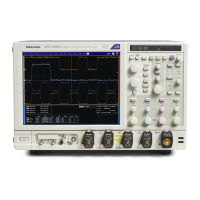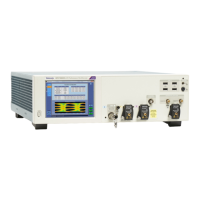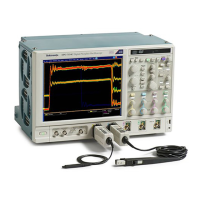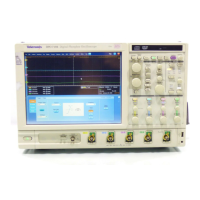Oscilloscope R eference Trigger holdoff
Trigger holdoff
Trigger holdoff can help stabilize triggering. When the instrument recognizes a trigger event, it disables
the trigger system until acquisition is complete. In addition, the trigger system remains disabled during
the holdoff p
eriod that follows each acquisition. Adjust holdoff to obtain stable triggering when the
instrument is triggering on undesired trigger events.
A digital pu
lse train is a good example of a complex waveform. Each pulse looks like any other, so many
possible trigger points exist. Not all of these will result in the same display. The holdoff period allows the
instrument to trigger on the correct edge, resulting in a stable display.
At the longer holdoff time for the top waveform, unstable triggering occurs. With a shorter holdoff set for
the bottom waveform, triggers all occur on the first pulse in the burst to remedy the u nstable trigger.
The Holdoff setting range is 1.5 µs (minimum holdoff available) to 12 s (maximum holdoff available). For
more information on how to set holdoff, click here
(see page 474). You can also set a default holdoff.
The d efault holdoff is the general-purpose holdoff for most applications and varies with the horizontal
sca
le. It is equal to five times the current horizontal scale setting.
What do you want to do next?
Learn about trigger coupling. (see page 700)
Learn about trigger modes. (see page 698)
DSA/DPO70000D, MSO/DPO/DSA70000C, DPO7000C, and MSO/DPO5000 Series 699

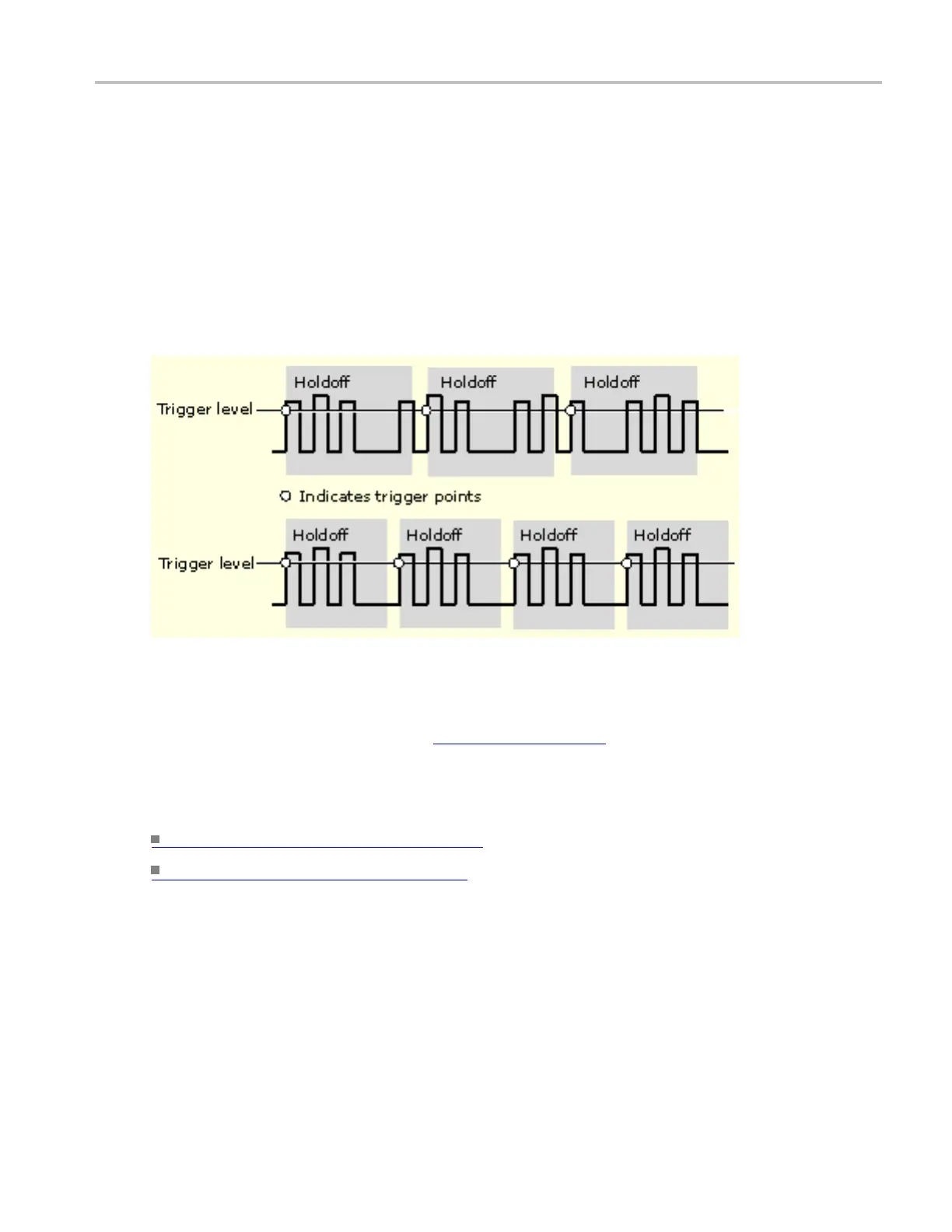